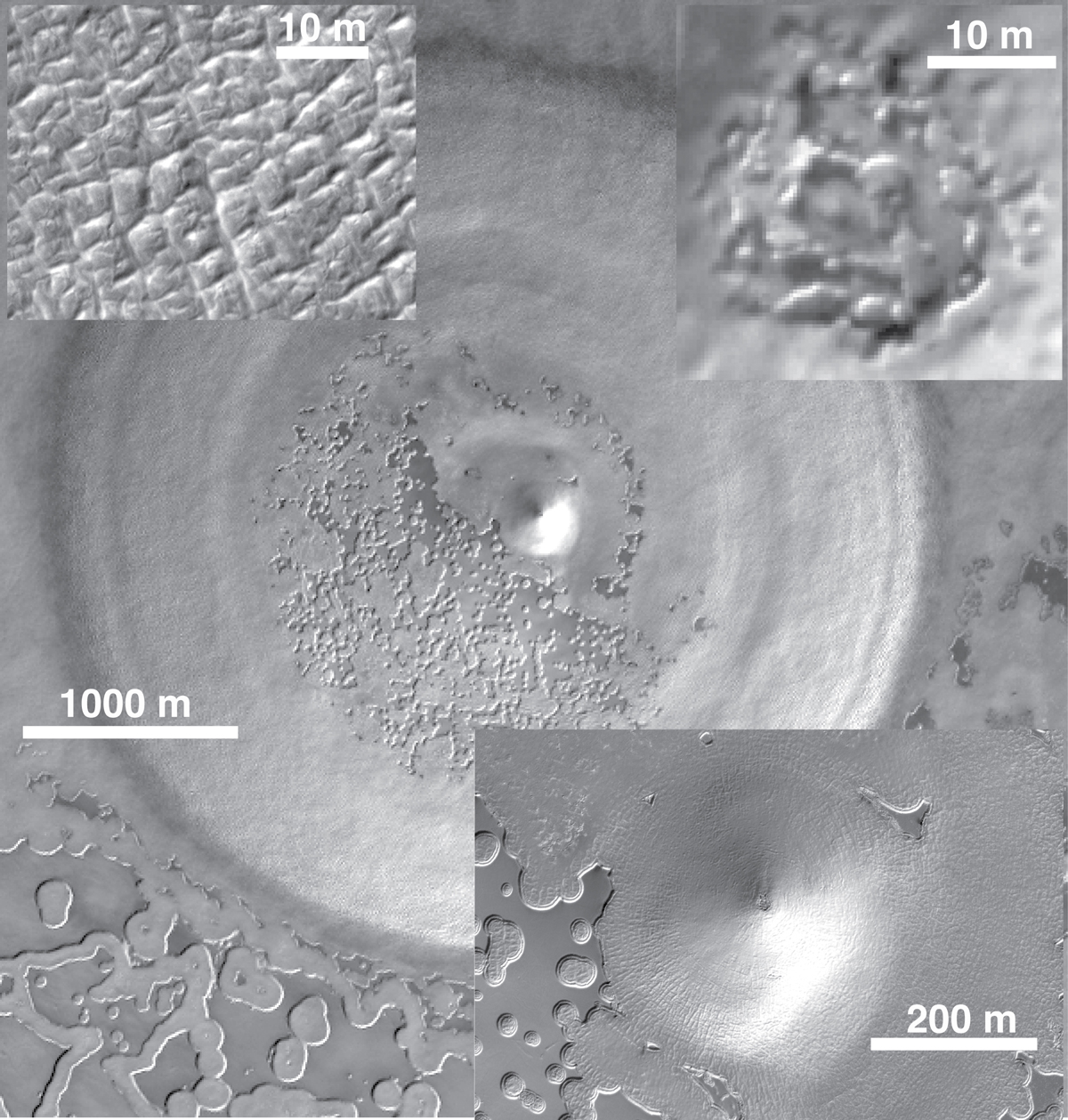Mars' Thick Dry Ice Sheet Points to Planet's Wetter Past

The south pole of Mars has a layer of dry ice that is 30 times thicker than previously thought, a find that suggests the Red Planet may have had more liquid water on its the surface in the distant past, scientists say.
While most of the ice at the Martian south pole is frozen water, some of the ice pack is composed of dry ice — frozen carbon dioxide.
A team of scientists used a radar instrument on NASA's Mars Reconnaissance Orbiter to calculate the depth of dry ice deposits. By measuring how long it took for the radar waves to travel through the ice and bounce back to the MRO spacecraft, the researchers determined the dry ice cache was nearly 10,000 feet (3,000 meters) thick.
"The volume of the deposit is about the volume of Lake Superior," said study leader Roger Phillips of the Southwest Research Institute.
On a planetary scale, that may not seem like a lot. But dry ice is composed of carbon dioxide, and that quantity has profound implications for the climate of Mars. [Latest Mars Photos from NASA Rovers]
Dry ice on Mars
As on Earth, the tilt of Mars' axis controls the seasons and the temperature. But unlike Earth, which is stabilized by our single large moon, Mars' axis can shift from ramrod straight to a tilt of nearly 60 degrees, a change that influences the southern polar caps.
Get the world’s most fascinating discoveries delivered straight to your inbox.
"When the tilt axis of the planet — the obliquity — is very high, higher than it is now, the carbon dioxide is released into the atmosphere," Phillips told SPACE.com. The amount of gas is almost double its present form, he added.
"When the obliquity is low it goes back into the polar caps," Phillips said.
Some of that carbon dioxide is lost through each phase of the cycle, but most of it is retained. It freezes again at the poles, the coldest spots on the planet, until the axis tilts and the cycle begins again.
The cycle can take about 100,000 years to complete, which means that the planet is constantly shifting its carbon dioxide levels. Phillips and his team used the Shallow Subsurface Radar instrument on the MRO spacecraft to measure the Martian dry ice pack.
The research is detailed in April 21 issue of the journal Science.
Water on Mars
The low atmospheric pressure of the Red Planet today means that water placed on the surface would almost immediately boil away. However, increased levels of carbon dioxide could have helped support a denser, thicker atmosphere in the past.
While the result wouldn't be pools of water, there would certainly be more places on the surface that the water wouldn't vaporize as quickly as it does today, researchers said.
"The fact that the atmospheric pressure is doubled and water present would not boil means that there would be more tendencies for gullies to form," Phillips added.
Gullies on Mars were first found by the Mars Global Surveyor in 2000, and provided the first hint that water once flowed across the surface of the Red Planet. Since then, scientists have sought to determine when and how much of the liquid existed in the past.
Water is considered a necessary element for life to exist. However, Phillips emphasized that the increased carbon dioxide in the atmosphere would have had minimal repercussions when it comes to the possibility of life on Mars.
In addition to more surface water, a thicker atmosphere also means more dust storms could have crossed the planet in the past. Today's Martian dust storms are the largest in the solar system, often lasting for months at a time.
Combining increased dust storms with more carbon dioxide could also cause additional, yet-unrealized changes in the Martian atmosphere, researchers said.
Follow SPACE.com for the latest in space science and exploration news on Twitter @Spacedotcom and on Facebook.
This story was provided by SPACE.com, a sister site to LiveScience,





